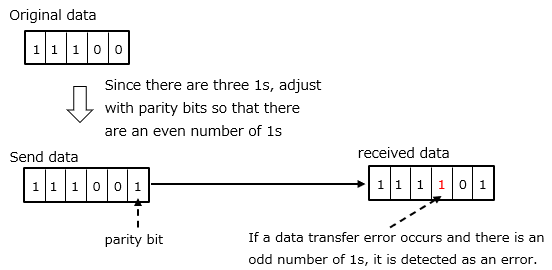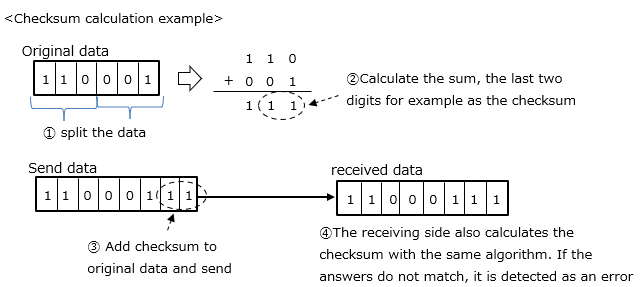Parity check, Check sum, Cyclic redundancy check |
|||||||
・CAN,LIN communication ・SENT communication ・USB Communication ・Ethernet ・SPI Communication ・Parity, Check sum, CRC ・Data transfer speed ・Clock synchronous, Asynchronous methods ・Differential Signaling ・Message authentication, Digital signature |
Parity check, checksum, and CRC (Cyclic Redundancy Check) are all methods of error detection during data transfer. ■Parity Check
A bit (parity bit) is provided to adjust the number of 1s contained in the transmitted data so that it becomes an even number (or an odd number), and it is added to the original data and transmitted.
If the number of 1's is not an even number (odd number), the receiving side detects it as a transfer error.
■Check Sum
Divide the original data and calculate the sum. The checksum is obtained through an algorithm to its summation value.
Algorithms include a method of simply using the value of the lower digits as the checksum, and a method of using the remainder after dividing by 255 (0xFF) as the checksum value.
If the receiving side also calculates with the same algorithm and the answer does not match, it is detected as a checksum error. ■CRC (Cyclic Redundancy Check)CRC is a method of calculating using an algorithm more complicated than checksum. In this method, the original data is divided by a generator polynomial, and the remainder is added to the original data before transmission. There is also a method of dividing the total sum of data by 255 like a checksum, but it is characterized by dividing by a more complicated formula.
|
|
|||||


